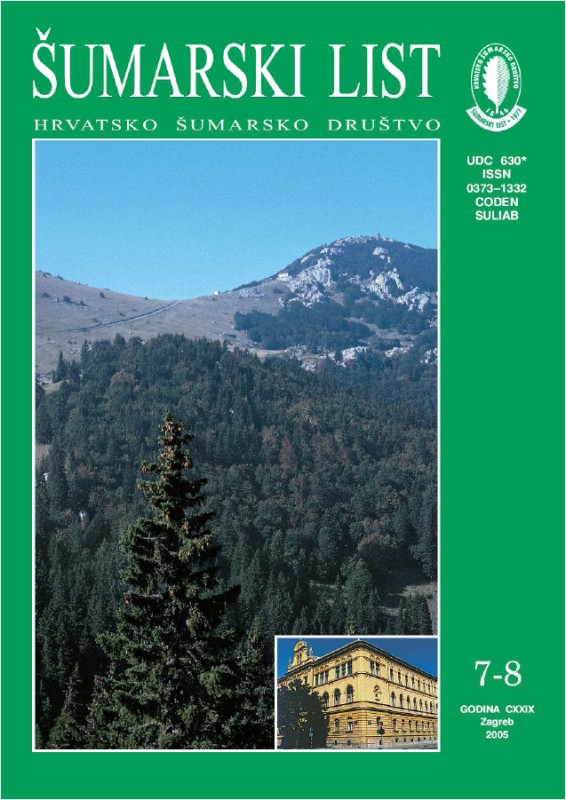
broj: 7-8/2005
pdf (20,5 MB) |
|
||||||||||||||
| IZVORNI ZNANSTVENI ČLANCI | ||
| Mario Šporčić, Ivan Martinić | UDK 630* 302 + 961 + 303 (001) | |
| A Model for Licensing Forest Contractors pdf HR EN | 375 | |
| Ivo Trinajstić, Zvonimir Pelcer | UDK 630* 188 (001) | |
| Nomenclatural and Syntaxonomic Revision of the Ass. pdf HR EN | 385 | |
| Dubravko Horvat, Ankica Kos, Željko Zečić, Marijan Šušnjar, Ivan Bešlić | UDK 630* 304 (001) | |
| Research of Oak-Wood Dust Concentration in the Working Environment of Fuelwood Processing pdf HR EN | 393 | |
| PREGLEDNI ČLANCI | ||
| Boris Vrbek | UDK 630* 114.2 + 116 | |
| Lysimetric Pedology as a Method of Quality Researches of Soil Solution in Forest Soils of Croatia pdf HR EN | 397 | |
| STRUČNI ČLANCI | ||
| Viktor Šegrt, Marijan Grubešić | UDK 630* 156 | |
| Falconry Equipment pdf HR EN | 409 | |
| Dražen Grgurević | ||
| Garanjin Park in Trogir – The Oldest Botanical Garden in Croatia pdf HR EN | 415 | |
| Summary: Garanjin Park is the most valuable landscaping achievement in Dalmatia in the 19th century. It was designed in the early nineteenth century and served as a venue for plant experiments as early as 1802. For this reason it can justifiably be considered the first botanical garden in Croatia. With time, plant experiments were abandoned. Roman stone monuments from nearby Salona were brought to the park, artificial hillocks were erected and it became the first English-style park in this area. Its importance as a botanical garden is due to experiments with plants not previously raised in Dalmatia, conducted with the goal to promote the neglected Dalmatian agriculture. All this made the park an indispensable sight to be visited by many dignitaries. Today, the park is totally neglected and devastated. The plants are destroyed for the most part. Of the earlier 359 species only some fifteen species have survived. The buildings are either destroyed or in a better case, devastated. Its regeneration will be complex and difficult. Why is the park neglected? The answer lies in ourselves: we do not look upon gardens and parks as products of creative thought, the highly complex and ingenious aftermath of human expertise and culture combined with nature and long-lasting expert care, but as an improvisation and a supplement to architecture. | ||


